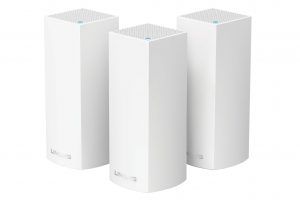





That being said, it’s important to know how this so-called wondrous Wi-Fi works. As mentioned, Velop works with three radios inside of it, similar to Netgear’s solution to Wi-Fi, Orbi (a highly popular option among consumers). Each Velop unit has two 5GHz bands with up to 867Mbps, as well as one 2.4GHz band, at up to 400Mbps. Velop is powered by a quad-core ARM Cortex-A7 chip with 4GB of flash memory, a 512MB DDR3 system memory, as well as Bluetooth 4.0. That’s not bad, not bad at all. A single Velop is used as the main router (this is how most Wi-Fi set ups work), while the other units live in one or two rooms away. The special part of it all is how all three units working together allow one 5GHz band for the back-haul. This allows Velop to create a consistency in connection, as it always holds a tie to the other routers. This is said to extend the network, as well as prevent some of the possible speed drop-off that two-band routers experience. The only other known Wi-Fi system to use a similarly effective strategy is the previously mentioned Orbi.
Touted as powerful enough to double real-world Wi-Fi, Velop doesn’t come cheap, and that’s something it surely has in common with its competition. At $500 for a set of three units, $200 for a single unit, and $350 for two, Velop is available now with a three-year warranty. Despite the price tag, I think we should go ahead and admit that these routers host a bunch of raw power, plenty enough to cover up to 6,000 square feet when using all three units.

 Laptop & Tablet Parts
Laptop & Tablet Parts




















